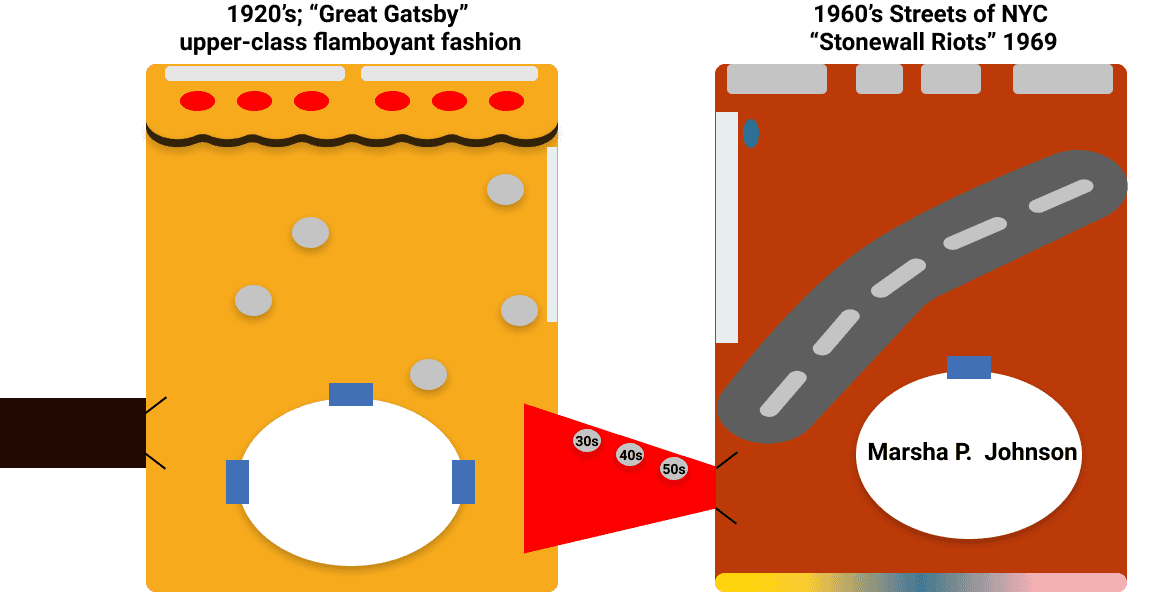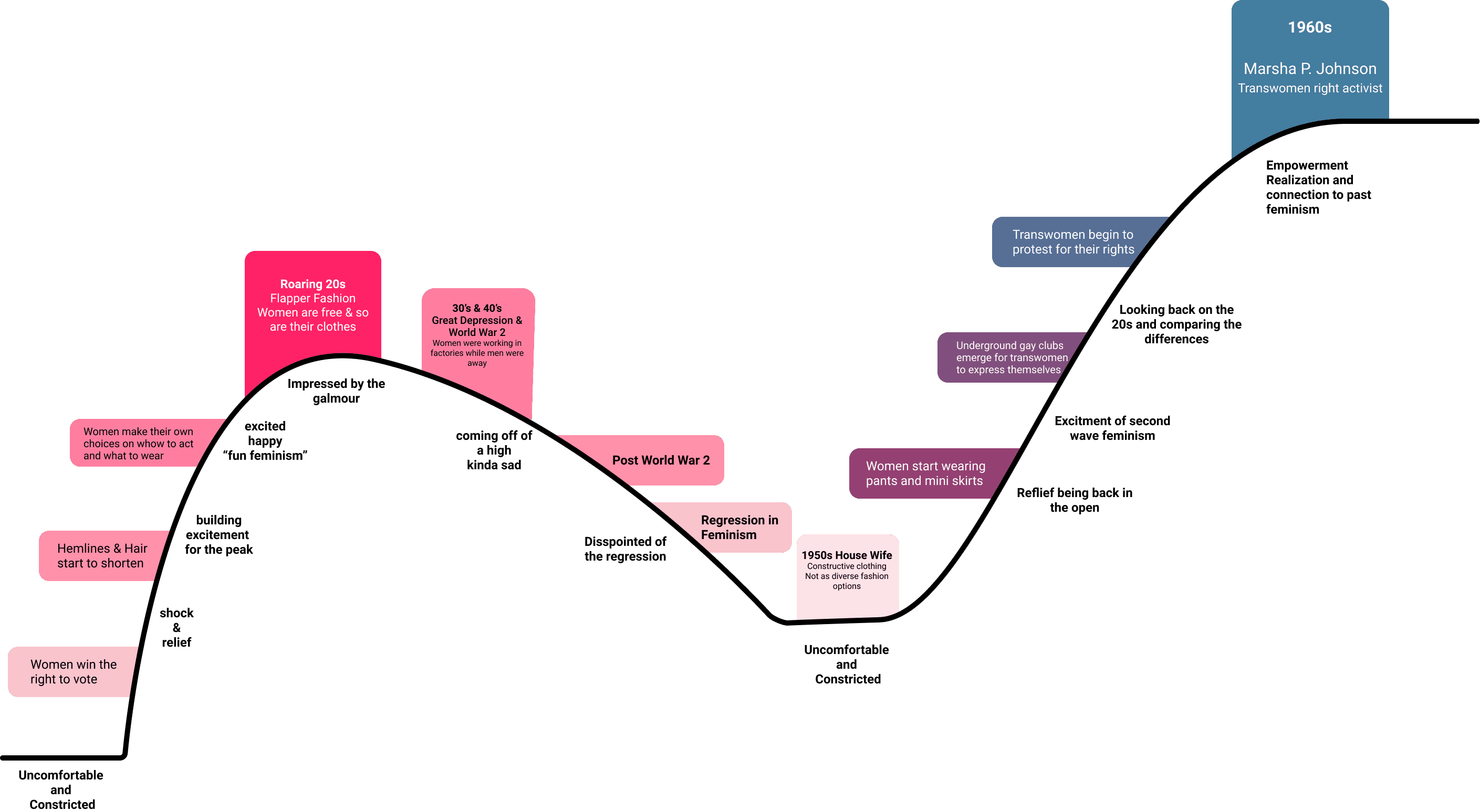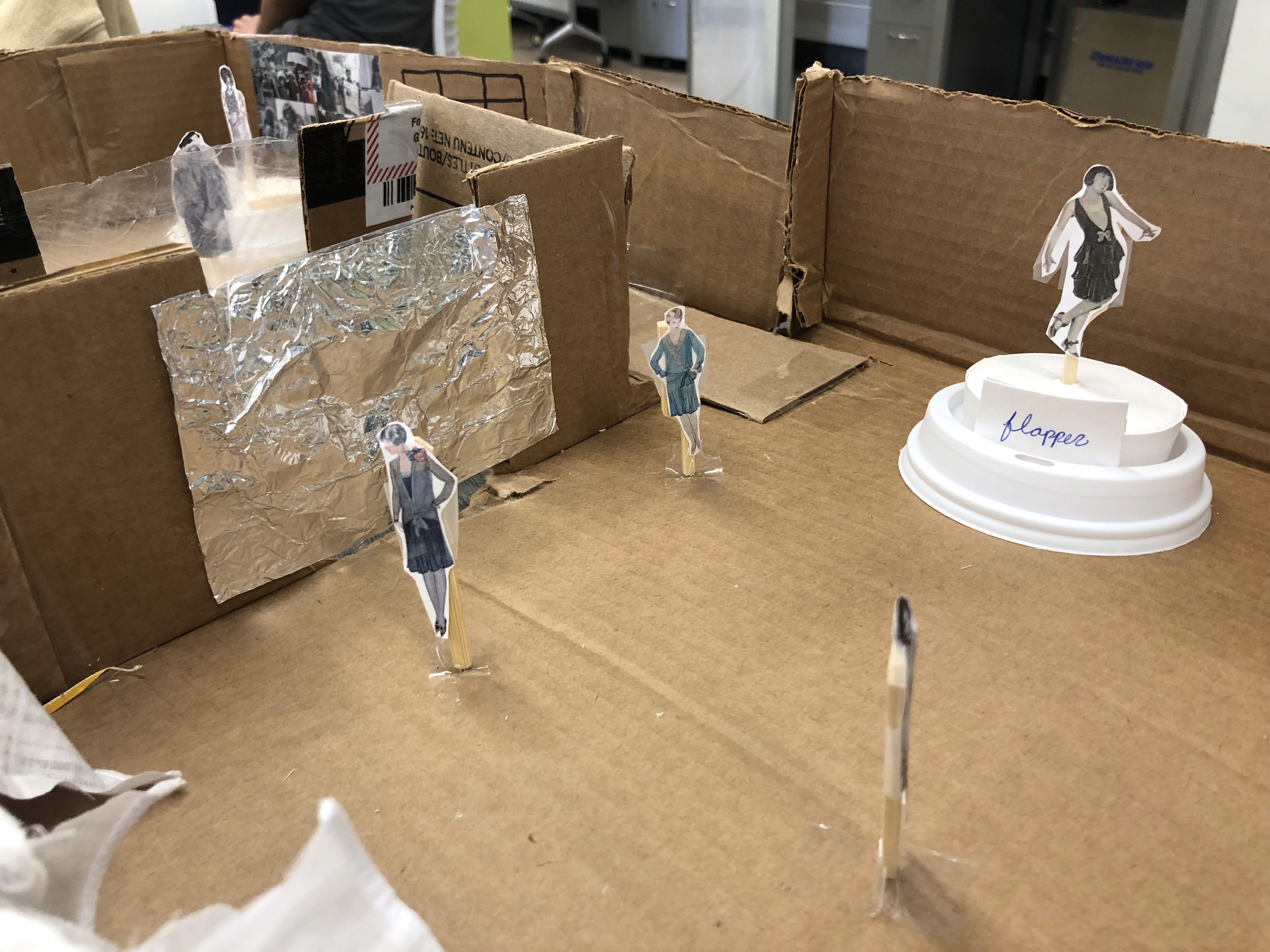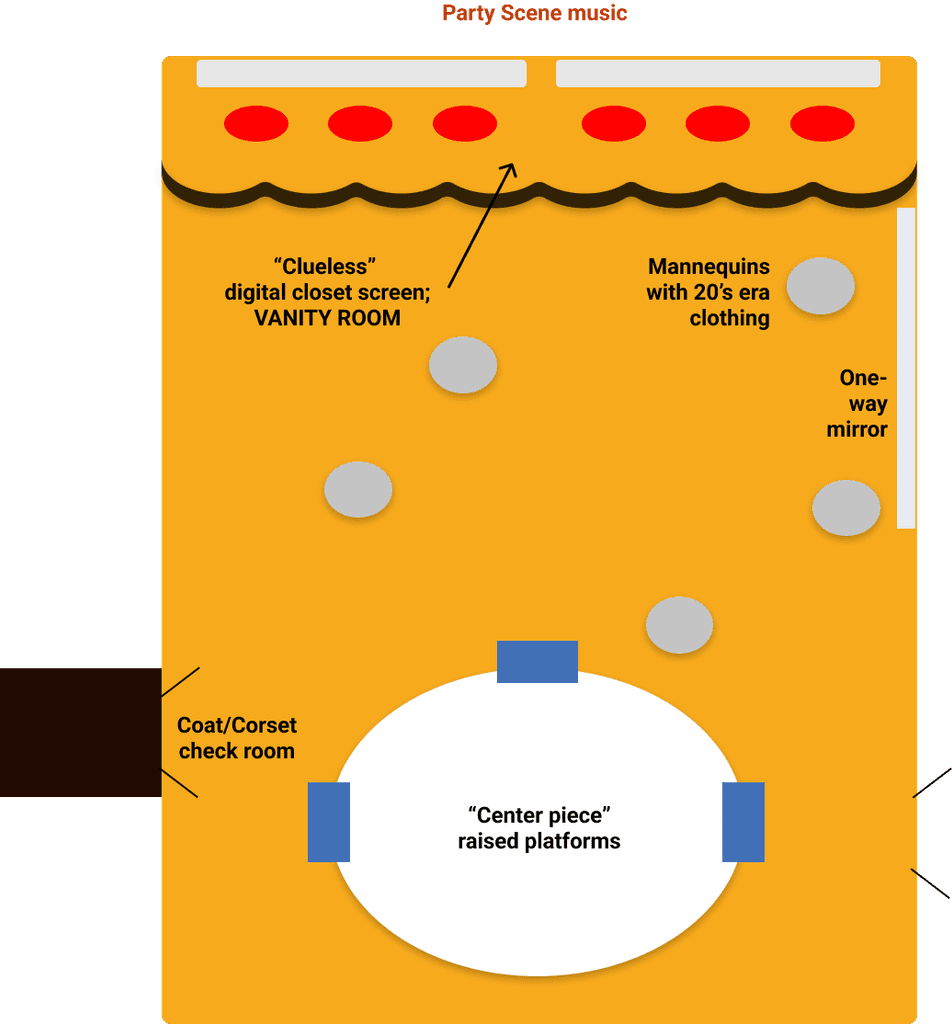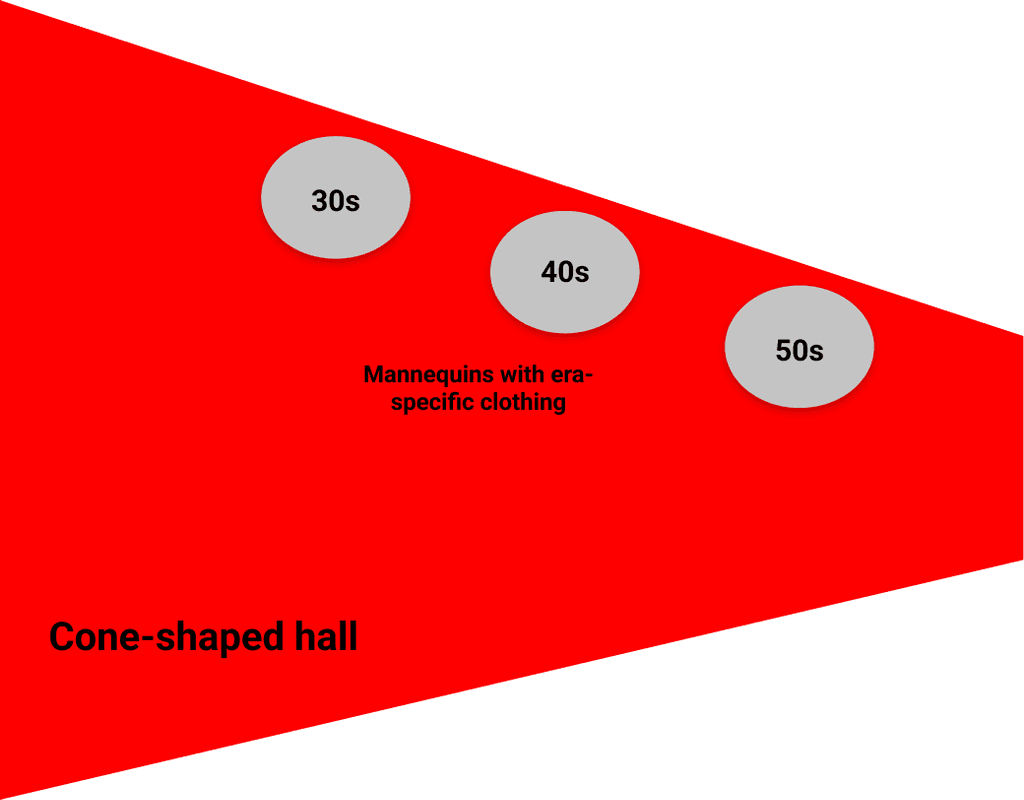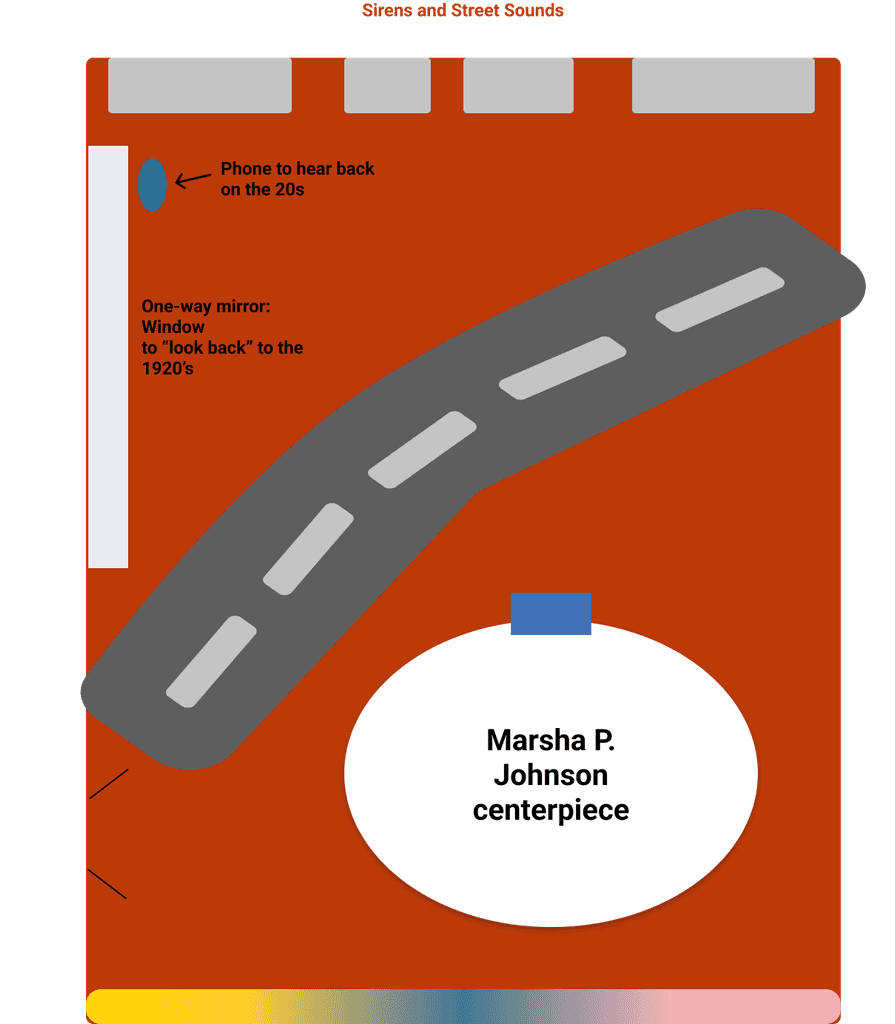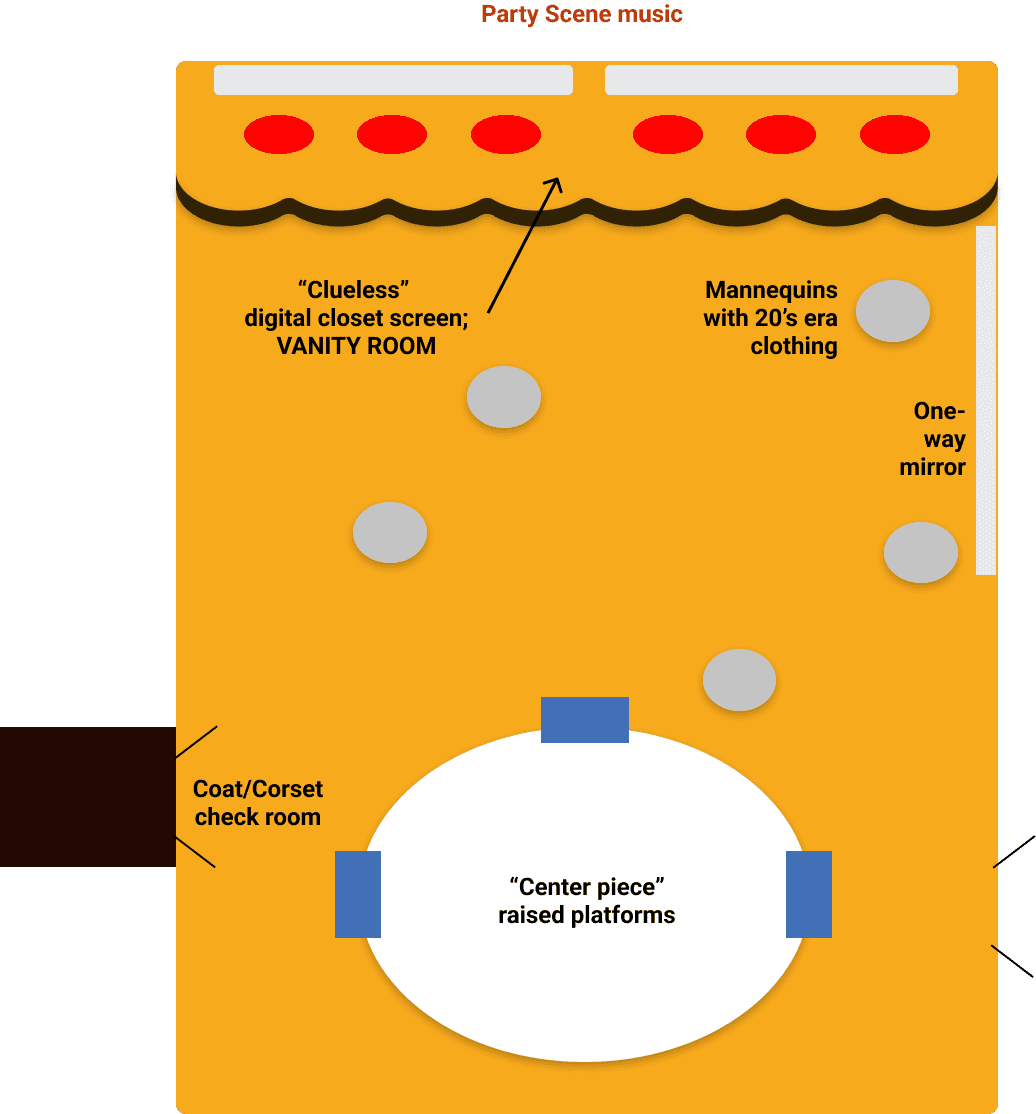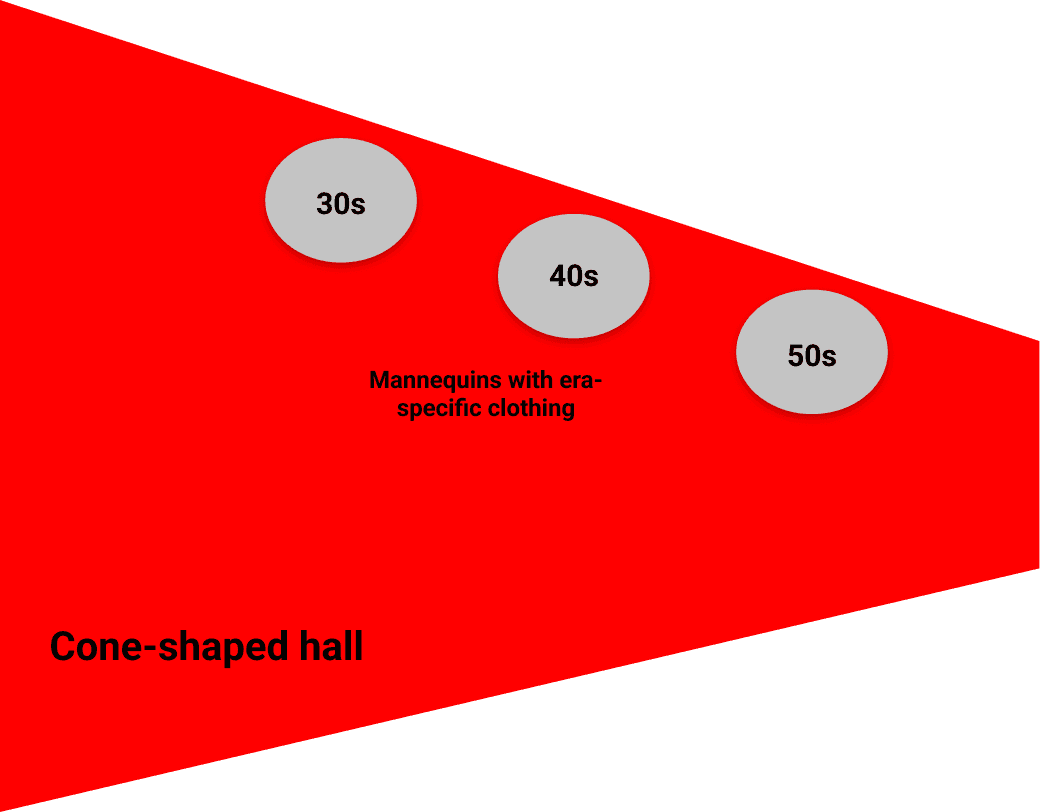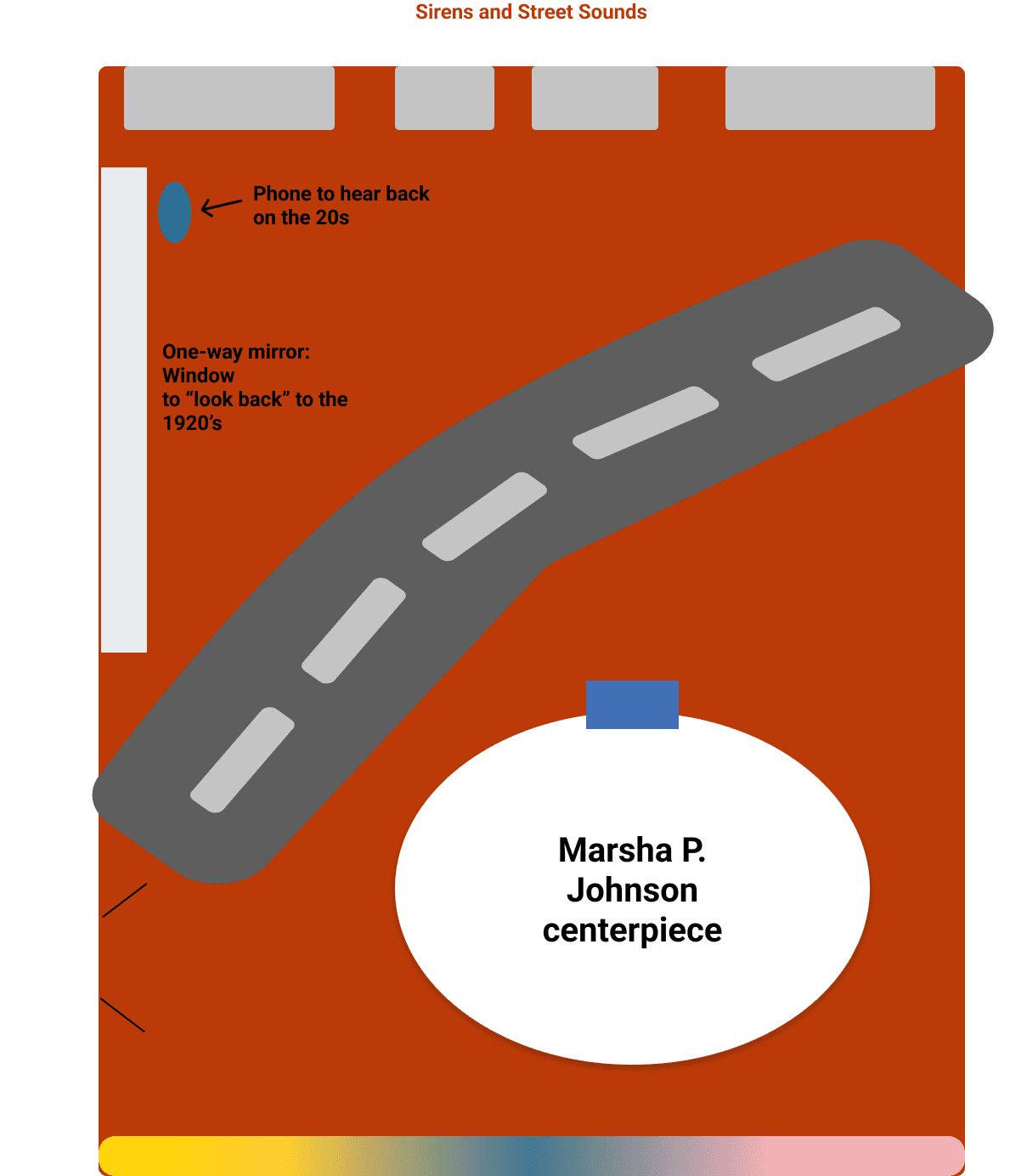exhibition design
1900's Fashion Exhibit
ROLE
UX Designer
YEAR
2022
Throughout the 1900’s, fashion was used as a voice of expression in numerous ways, from the post corset-era in the 20’s to voicing identities for trans woman in the 60’s. Our group created a fashion exhibit centered on the progression of fashion in the 1900's, where we influenced the physical space and incorporated multiple touch points (digital, auditory, and physical) to create meaningful interactions that allow a sense of embodied participation within the exhibit.
Role 👩💻
In a group of 5, I contributed to the research and ideation of the project. I also took a lead role in the coded digital touchpoints.
Tools + Processes 🛠️
Co-design, User research, Creating a master narrative, Web design (HTML, CSS, JS), Figma prototyping, Physical prototype
Understanding the Users
To gain a better understanding about the history and use of fashion in the 1900's, we read up on books and articles from and of that time period. From these articles and journals, we discovered that despite each time period representing a different type of femininity, there was a common theme of women using fashion to represent who they were. Fashion was a voice of empowerment and expression, and we wanted to display that feeling in our exhibit.
Creating a Digital Probe
To better understand how we could incite empowerment, we created a digital probe that was given to 5 college students who were female-identifying. We tasked them with watching video clips from the Great Gatsby and afterwards asked them to draw on paper what they would wear to a party in the 1920s. For the final activity, we asked the participants to create a “mood board” on Pinterest and find images that made them feel empowered. The purpose of this probe was to help our team understand how women interpreted fashion during the 1920s and what they would wear that made them feel confident. We also wanted to highlight the diversity of what makes each woman feel empowered.
However, from this exercise, we found that empowerment was subjective, a simple concept that we had overlooked. As a result we shifted our museum's focus from individual perceptions of empowerment to how fashion allowed women in history to feel empowered.
Master Narrative
To map out how we wanted our museum to be perceived we created a master narrative. This narrative follows the story of feminine fashion throughout the 1900s. We included the emotions we hoped to incite in our users as a template for designing what we would include within the museum. Through countless rounds of iteration, our team was able to create 3 sections, each with its respective decade within the 1900's where fashion was represented differently.
Ideation and Prototyping
To create an immersive experience, we created touch points within the museum. We created physical, digital, and auditory touch points that emphasized the theme of the exhibit and section, such as the one-way mirror to emphasize the 20's impact on the 60's. These touch points are shown in detail below.
Lastly, to emphasize the architectural structure of our design, we created a physical prototype of the museum. We used popsicle sticks, cardboard, paper, and cups to bring our exhibit to life.
